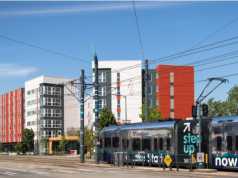SEATTLE – August 3, 2015 – (RealEstateRama) — The City of Seattle announced it is implementing a series of recommendations for enhancing traffic incident management practices. The changes are based on nationwide best practices for incident response and will enable City departments to better manage on-street collision scenes and help improve traffic flow around these scenes.
“We must do better to clear major collisions because they can create lasting traffic impacts on our city’s road network,” said Mayor Ed Murray. “The steps we are taking will help improve our response time and get traffic flowing after incidents as quickly as possible.”
“I want to see these incident response improvements adopted by year’s end,” said Councilmember Tom Rasmussen, chair of the Council’s Transportation Committee. “Traffic collisions will happen, and that shouldn’t mean the entire city comes to a standstill for hours on end. We can and will do better.”
To improve its response efforts, the City engaged two consultants with extensive expertise in traffic incident management, the former chief engineer/first deputy commissioner of New York City’s Department of Transportation, Sam Schwartz, and the former chief of the Washington State Patrol and former administrator of the Federal Motor Carrier Safety Administration, Annette Sandberg. The consultants were tasked with reviewing the City’s collision response practices, surveying best practices around the country, and providing actionable recommendations for improving the City’s policies and procedures.
Their recommendations, which the City has already begun implementing, include:
Establishing a citywide Traffic Incident Management (TIM) program by creating a citywide TIM Policy Manual, a formal memorandum of understanding between departments, and detailed clearance policies and procedures for each department.
Conducting comprehensive TIM training for all individuals involved in collision response, to include holding regular multi-agency tabletop exercises and providing Traffic Incident Management training for all Seattle Police Department (SPD) patrol officers.
Utilizing nationwide TIM best practices by leveraging the State of Washington’s expertise and joining the state’s TIM Network for best practices and better coordination.
Standardizing and enhancing at the scene response by developing a field guide for patrol and traffic officers, conducting training on legal liability and upgrading equipment for response staff.
“The Seattle Police Department is committed to road safety and traffic management,” said Seattle Police Chief Kathleen O’Toole. “Our new policies, training and collaborative relationship with SDOT will produce better results and ensure that incidents are cleared faster.”
The City is also implementing the consultants’ recommendations to:
Upgrade traffic management operations by creating “Gridlock Alerts,” installing additional traffic cameras and improving the tracking of collision related impacts.
Improve towing operations by integrating the towing company into regular TIM training, and creating a “Tow Officer” position within SPD.
Enhance commercial vehicle enforcement (CVE) through updated policies for CVE officers on commercial vehicle collisions, deployments of CVE officers to all commercial vehicle collision scenes, and mandatory post-crash inspections of commercial vehicles involved in major incidents.
Upgrade data collection on collision response, establishing clearance benchmarks and evaluating performance, and conducting six-month and one-year reviews of TIM practices.
As part of these recommendations, Mayor Murray will submit a resolution to the City Council highlighting the state’s “Steer It, Clear It” laws, which requires motorists to clear vehicles from the roadway after a collision, provided they are able. The resolution will also include reference to the “Hold Harmless” law found in the Revised Code of Washington 46.52.020 (2) (b) to reinforce that SPD responders, and those on scene directed by SPD, will not be held liable for private property damage as they work to restore roadway mobility.
“The hourglass shape of our city, its water crossings, moveable bridges, and limited detour routes around crash sites make collisions problematic for Seattle,” said SDOT Director Scott Kubly. “We are focused on minimizing collisions and, through these improvements, limiting the impact when they occur.”
In March 2015, a commercial vehicle roll-over incident blocked traffic on SR-99, resulting in delays that impacted the city’s entire road network. The Seattle Department of Transportation and the Seattle Police Department collaborated on an after-action report, which recommended that the city engage external consultants to ensure the City implements best practices, and that the City also convene an inter-departmental team to develop an action plan for implementing the consultants’ recommendations.
CONTACT:
Rick Sheridan, SDOT, (206)684-8540
Sgt. Sean Whitcomb, SPD, (206)615-0923
Jason Kelly (206) 684-8379




